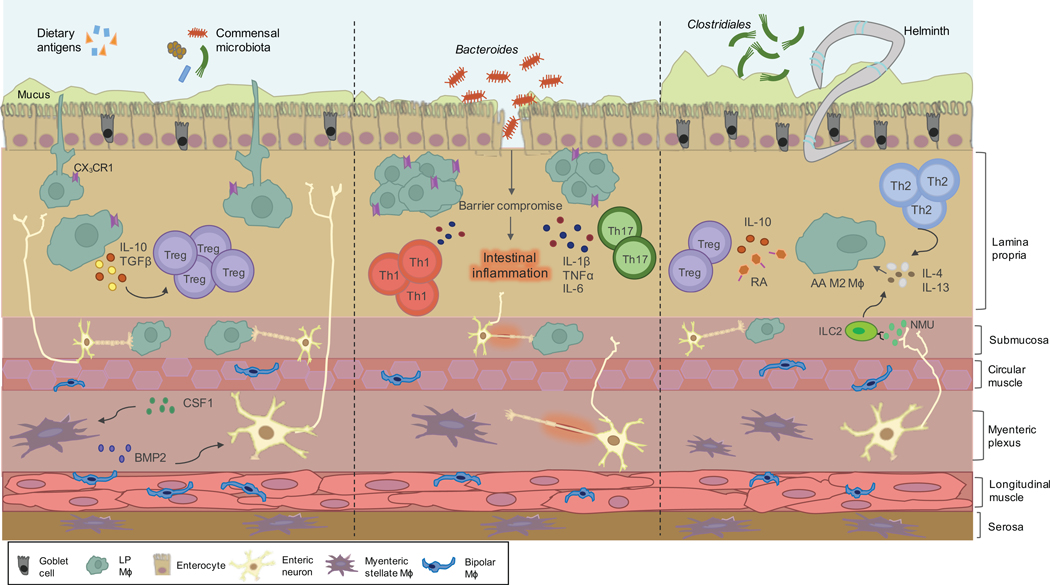Figure 1.
Orchestration of intestinal macrophages in homeostasis, inflammation and helminth infection. Macrophages residing in the lamina propria (LP) are strategically positioned in close proximity to the epithelial layer. CX3CR1+ LP macrophages participate in sampling of luminal contents via extension of transepithelial dendrites and phagocytose transgressing pathogens. Through the secretion of immunoregulatory cytokines IL-10 and TGF𝛃, LP macrophages support the expansion of regulatory T cells (Tregs). Within the deeper layers of the gut wall, the submucosa and muscularis externa, macrophages engage in a reciprocal crosstalk with a network of enteric neurons. This molecular dialog is mediated by the secretion of bone morphogenic protein 2 (BMP2) by macrophages. In response, enteric neurons secrete CSF1 which further promotes BMP2 secretion. In the setting of intestinal inflammation and breach of the epithelial layer, proinflammatory macrophages are recruited and elicit a protective immune response mediated by the secretion of inflammatory cytokines IL-1𝛃, TNFα and IL-6. Helminth infection induces a type 2 immune response mediated by an induction of Tregs and Th2 cells. Enteric neurons may sense infection by helminths and produce the neuropeptide neuromedin U (NMU) that stimulates innate lymphoid type 2 cells (ILC2s) to produce type 2 cytokines that can alternatively activate intestinal macrophages.

